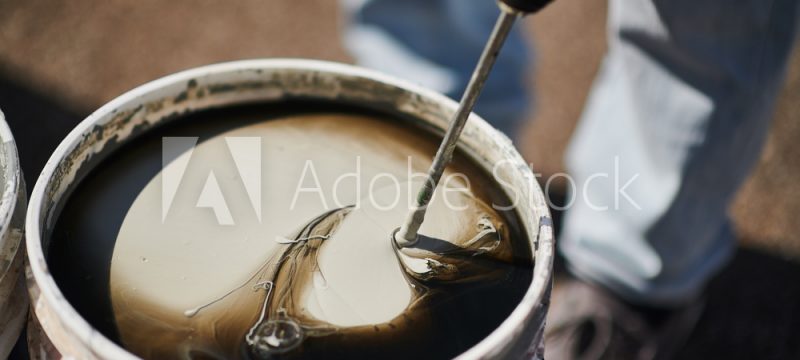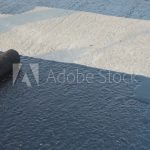DIY guide to epoxy paints
Applying epoxy paints yourself shouldn’t be a daunting task and it isn’t if you do your research and follow the instructions set down by the manufacturer. But not everything can

There are so many to choose from and all suggest that they are the best and why wouldn’t they. Choice depends on many parameters and needs;
Budget, durability, Hygiene, decorative, chemical resistance, substrate condition, coverage, water resistance, ease of application and the environment are all questions you need to answer.
Furthermore, choice is complicated by the many different ‘resin types’ – Epoxy, polyurethanes, acrylics, methacrylates, polyesters and polyaspartics to name the most common ones.
Coloured flakes, quartz sands and pigments all can be used in these systems for decorative and slip-resistant purposes.
The purpose of writing this article is to provide you with an overview of the difference types and how they are best suited… or not, to your particular project and perhaps skill set.
Epoxies are probably the most common coating type for floors. These coatings are either water-based, solvent based or solvent free.
Firstly, all epoxies are not UV stable and so will discolour over time. Ultra violet light attacks the polymer and causes ‘yellowing’. Some are more prone than others, the best of them being the water based versions but they still discolour. This is generally accepted for garages and industrial floors etc but is certainly not for show rooms or domestic homes. Having said that, and for the life of the coating, it does not detract from its other performance characteristics.
Water based epoxies tick many boxes. They are what they say-water based and range from 50 to 65% solids. (The rest is mainly water). They are an easy to mix and apply good environmentally friendly option as they contain no solvents and so are healthier for the applicator and the environment than say solvent based types. They offer increased coverage ( 35-40 m2/Litre) over solvent free types (20-25 m2/Kg), ease of application and can be applied on damp surfaces which can be a major plus. Application depth for most is reported to be from 80 to 100 microns wet so when the water evaporates then the finished paint depth on the floor is reduced by as much as half. Therefore two recommended coats equate to 100 to 120 microns in total – dry. They are a great coating for light to medium traffic areas such as garages, factories etc.
Solvent based epoxies have their place, for now but the simple fact of the matter is that they do contain solvents which are deemed very unhealthy and perhaps unnecessary by many governing bodies. Indeed anything containing solvents are under the microscope and EU legislation continues to force paint solvent content reduction – and rightly so. They tend to cure faster and should be at a lower cost. If you are choosing one then make sure you read the Safety Data Sheet and wear the right protective gear. Dust masks are not going to quite do it. One other thing, the solvents tend to ‘taint’ so do not use in food or textile areas and be sure you take ‘party’ walls and or neighbours into account. This goes for any and all solvent based paint.
Solvent free epoxies are 100% solids and contain no solvent or water so very low odour. They are typically harder wearing, have increased chemical resistance, low odour so safer to apply than solvents and have higher substrate adhesion than say water based epoxies. Their increased wear resistance comes from their higher application build – typically 200 microns per coat and with 2 coats that makes them 4 times thicker than water-based and solvent based, and even higher still on single pack solvented, solvent free or water-based polyurethanes and acrylics that you may have come across.
The good thing about 100% epoxies is that, depending on your needs, they can be interchanged with different ‘activators’ or hardeners to facilitate different properties e.g. high chemical resistance, increased adhesion, application on to damp substrates, cold temperature cure and speed of cure in reducing down time. One needs to understand the project requirements and source accordingly.
Polyurethanes have been around a long time and are dependable coatings if laid correctly. They are either 1K or 2K (one pack or two pack) and are solvent based, water based or solvent free. They do not tolerate damp substrates though so the substrate needs to be dry or at the very least sealed first. Generally, polyurethanes contain isocyanates which are a health and safety concern. Isocyanates react with the moisture in the substrate in preference to what it should be reacting with which is the polyol resin component of the formulation. The result is most probably cracking, delamination, peeling and eventually mass failure so make sure the substrate is dry. The good news is that they do step in where UV resistance is needed but be careful to specify as that depends on the polyurethane resin type. Polyurethanes, especially 2k formulations tend to be more flexible too so when it comes to high temperature steam cleaning – they can withstand this considerably over epoxies that tend to be quite rigid. 1K and water based PU formulations tend to be at the lower end in wear resistance and durability and that should be reflected in the price and coverage but don’t expect long term service from them. If you have to go for a polyurethane then best look at 2K products in our view and yes, you guessed it, they are more expensive. Indeed they have gone up in price over the last few years more so than epoxies. So in summation, unless you need flexibility and perhaps UV stability then look closer at epoxies.
Methyl methacrylates (MMA) coatings are very fast cure resin systems providing minimum down time. They are UV stable so do not chalk or yellow, have ok chemical resistance, and are a ‘go to’ product when being applied in sub zero conditions. Temperature application ranges from -30degC to 40degC so impressive. They smell awful so be aware. It’s a contractor’s product and really should not be used with little or no experience as inexperience may lead to disappointment. Quality, resin age and storage are really important considerations for the manufacturer too so choose wisely.
Polyaspartics are a good competitive product for MMA in that they facilitate a fast return to work also. That being said, they are again a professional contractor’s product due to the speed of cure. They are UV stable so will not discolour. Unfortunately, they also tend to be expensive though so it really does depend on the project.
In summation, when looking at painting a floor, compile a list of features that are desirable and necessary. Does the coating need to be UV stable? Is the floor damp? Is it a heavily trafficked area? How about chemical resistance? Can I afford the down time? Can I do it myself or get a contractor in? How much is in my budget? We have answered a lot of these questions here, although a might briefly, but we are on hand to give you impartial advice even if we do not manufacture the product you need.
Applying epoxy paints yourself shouldn’t be a daunting task and it isn’t if you do your research and follow the instructions set down by the manufacturer. But not everything can
There are advantages and disadvantages for most pond finishing options. In essence, pond paints are significantly less expensive than fibreglass and roughly comparable with a basic EPDM or butyl rubber liner. However…
Yes and no! Some paints contain styrene or isocyanates, which are unpleasant as they sound…
There are advantages and disadvantages for most pond finishing options. In essence, pond paints are significantly less expensive than fibreglass and roughly comparable with a basic EPDM or butyl rubber liner. However…
Pond paints are significantly less expensive than fibreglass and roughly comparable with a basic EPDM or butyl rubber liner. However, a basic liner can be very tricky to install correctly
